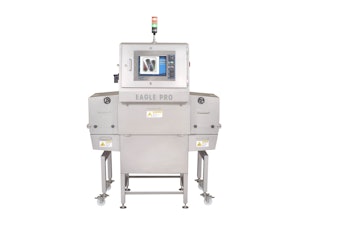You get the directive from on high: Reduce peak energy demand. Maybe it’s triggered by new regulations, maybe it’s intended to reduce carbon footprint, or maybe the goal is to cut spending. It’s an easy order to give but harder to execute. You’re already worried about quality, productivity, and performance. You’re working to minimize downtime and maximize throughput. You’d love to progress to predictive maintenance but right now you’re just busy keeping the line running. And now they want you to do it all with less? How the heck are you supposed to accomplish that?
Reducing energy demand is much easier than you’d think. By applying a few simple tools and techniques, you can cut the amount of energy consumed, modify the way your peak demand appears to the utility company, and keep your equipment running longer and better, while you’re at it.
Energy 101
Corporate energy bills are a bit more complex than just kilowatt hours times unit price. Because industrial customers are such large consumers of energy, utilities have developed fee structures that hold them accountable for their consumption. Pushing out enough current to satisfy high peak demand requires more robust infrastructure, from cabling to transformers. As a result, utilities scale consumption by a usage charge. This is a factor of the peak energy usage recorded in the month or quarter previous to the billing cycle and it’s applied to the entire bill. Drop that peak usage and you will drop your spending.
Similarly, energy costs are scaled by time of day. Charges are highest during daytime business hours and lowest overnight. Here, again, it’s a matter of redistributing your usage to get the most economical delivery.
United we stand, divided we save money
You can’t solve a problem unless you know it exists. That’s why the process needs to start with a detailed energy audit. Energy monitoring tools like AX Energy deliver complete visibility into usage on a component-by-component level on up to a facility level. Identify demand spikes that occur throughout the day. Look for the machines and components responsible for greatest consumption. Those will function as your targets of opportunity. Next, consider the tools in your energy savings toolbox.
Your first tool is timing. Cutting peak energy demand can be as simple as scheduling. Do you have two energy-intensive processes overlapping? Is there a way to decouple them? If not, can you schedule them during an overnight shift or do payroll costs outweigh the potential savings?
In many facilities, the daily start-up ritual involves toggling a single switch and waiting for equipment to turn on and initialize across the floor. The combined current draw of dozens or potentially hundreds of motors starting simultaneously creates an enormous demand spike that will send usage charges through the roof. The solution is to spread that out over time. Cascade the start up, either by using an electronic timer or establishing a procedure: cell one starts at time t=0, cell two starts five minutes later, cell three starts five minutes after that. The power company registers them as three distinct lower-draw events. And just like that, peak demand drops.
Cutting consumption
The above techniques affect the way the power company records consumption in order to calculate your bill. They do not alter the actual consumption itself. For that, we turn to the variable-frequency drive (VFD).
The top energy hogs in industry are pumps, fans, and compressors. They are powered by AC induction motors, which typically operate at fixed speed. That’s fine for some applications but for many others represents wasted energy. Maybe a compressor runs constantly when it is only needed 40% of the time. Maybe a pump needs to operate at different speeds. For decades, the primary method to get variable speed operation from an AC induction motor was to run it at top speed and adjust using mechanical devices such as clutches, brakes, damper vanes, valves, etc. The high speed and high duty cycle led to premature failure in both motors and bearings. The mechanical elements added to maintenance and introduced points of failure. Most of all, it wasted energy. VFDs provide an alternative.
A VFD uses pulse-width modulation to convert the frequency of AC wall plug power to between 0.3 Hz and 120 Hz. The speed of an AC induction motor goes as the frequency of the input, so we can use a VFD to make the motor run at a range of speeds. It’s a digital device, so it can be programmed to drive the motor¾and fan, pump, blower, etc.¾at a set speed or proportional speed based on process steps, schedule, operating conditions, or any of a variety of environmental or process triggers. A typical AC motor can be easily driven between 1% and 200% speed continuously, although the operating speed of pumps or fans typically ranges from 50% and 100% speed.
Now, the power consumption of a variable-torque load goes as the cube of rotation speed (see figure 1). That relationship means that adjusting volume by motor speed rather than mechanical device can cut that consumption dramatically. VFDs also provide another opportunity to reduce usage charges. Instead of starting the motor at full speed, the drive can be programmed to ramp it up gradually. This not only attenuates current spikes, it also lowers stress on the motor and any mechanical components like gearboxes, couplings, and bearings.
With these types of simple tools, engineering, maintenance, and facilities staffs can comply with regulations and corporate directives while remaining true to their own job assignments: to produce the largest amount of quality product as effectively and economically as possible.
The FR-F800 family of variable-frequency drives (VFDs) for pump, fan, and compressor control is specifically designed to deliver optimal energy efficiency. Optimized excitation control automatically adjusts drive current. Even for motors operating at 4% of rated torque, the drives deliver 35% higher efficiency versus standard V/F control. Conversely, the VFDs also perform well for high starting torque. A monitoring function displays savings to a panel, output terminal, or over the network.
Several features contribute to ease of installation and use. UL-1 design up to 40 HP enables it to be installed without the need for an enclosure. A standard USB port allows it to be set up with the aid of a USB memory stick. It incorporates both on-board memory to store motor parameters and a real-time clock to simplify diagnostics by time stamping trip messages.
The FR-F800 family also guards against failures and downtime. An anti-windmill function automatically controls loads that are already spinning before start up, preventing damage to motor and drive. The load-detection function monitors torque demand to detect variations that might indicate issues like broken fan belts, worn bearings, clogged pipes, and blocked filters. For the latter type of problems, it includes an anti-jamming feature that allows a pump shaft for example, to alternate directions until the debris is cleared (see figure 2).
In the case of compressors, the VFDs maximize efficiency while protecting components. Most compressors have maximum and minimum run speeds. FR-F800 VFDs can be programmed to enforce these operating conditions, as well as guarding against over pressurizing in the case of pressure already existing in the system.



















